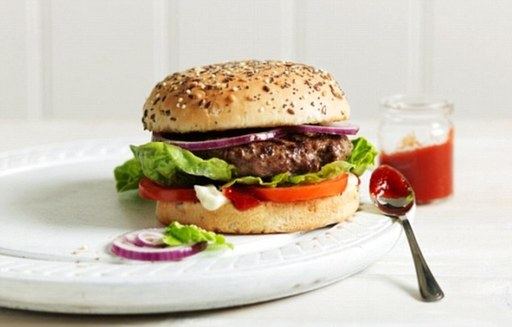荷蘭馬斯特里赫特大學(xué)教授馬克?波斯特研發(fā)出了世界上最貴的漢堡,該漢堡造價高達25萬英鎊(約合人民幣236萬元),漢堡中使用的牛肉并非來自牧場的牛群,而是從牛的干細(xì)胞中培育出來的。研發(fā)人員想借此證明,全球日益增長的蛋白質(zhì)需求將無需依賴飼養(yǎng)牛群便能得到滿足。該研究得到荷蘭政府和一位匿名商人的資助,這名商人可能成為試管漢堡的首位品嘗者。
科學(xué)家表示,這種試管培育的肉有望在十年內(nèi)上市銷售,并且有可能被素食主義者列為可食用材料。牛津大學(xué)的科學(xué)家在2011年就指出,人造牛肉耗費的能源比自然生長的牛肉少45%;另外,人造牛肉需要的土地空間比飼養(yǎng)牛群少99%,釋放的溫室氣體也比后者少78%到95%。
據(jù)聯(lián)合國糧農(nóng)組織統(tǒng)計,到2050年全球消費的肉類總量將是現(xiàn)在的兩倍,如果不尋求替代品,肉類將會變成奢侈食材。然而在試管肉品正式進入市場之前,英國食品標(biāo)準(zhǔn)局需要證明其食用安全性,并保證它與普通肉的營養(yǎng)價值相同。

 |
|
The world’s first test-tube burger will be served in London next week. It is made from meat grown in a laboratory, rather than cattle raised in pastures. |
The world’s first test-tube burger will be served in London next week. It is made from meat grown in a laboratory, rather than cattle raised in pastures.
And its developers hope it will show how the soaring global demand for protein can be met without the need for vast herds of cattle.
The 5oz ‘Frankenburger’, which cost £250,000 to produce, is made from 3,000 tiny strips of meat grown from the stem cells of a cow.
The raw meat is said to be grey with a slippery texture similar to squid or scallop.
It has been created by Professor Mark Post, from the University of Maastricht in Holland.
His research has been funded by an anonymous businessman – who may be the first to try the burger.
He told The Independent on Sunday: 'Right now, we are using 70 percent of all our agricultural capacity to grow meat through livestock. You are going to need alternatives. If we don’t do anything meat will become a luxury food and will become very expensive.’
A four-step technique is used to turn stem cells from animal flesh into a burger.
First, the stem cells are stripped from the cow’s muscle.
Next, they are incubated in a nutrient broth until they multiply many times over, creating a sticky tissue with the consistency of an undercooked egg.
This ‘wasted muscle’ is then bulked up through the laboratory equivalent of exercise - it is anchored to Velcro and stretched.
Finally, 3,000 strips of the lab-grown meat are minced, and, along with 200 pieces of lab-grown animal fat, formed into a burger.
The process is still lengthy, as well as expensive, but it could take just six weeks from stem cell to supermarket shelf.
His work is funded by the Dutch government, as well as an anonymous donation of 300,000 Euros - but it remains to be seen, however, whether the pioneering development will find favor with a public that likes to think of its chops, steaks and sausages as having their roots in nature, rather than in test-tubes.
Scientists say that it is possible the meat will be sold to the public within ten years.
Every kilo of meat requires 10 kilos of plant feed and oil, but cultured meat would only need two.
According to the Food and Agricultural Organisation we will be eating twice as much meat as we do now by 2050.
It is thought that the new form of meat could be acceptable to vegetarians, and animal rights organizations have already given their approval.
Oxford university scientists said in 2011 that cultured beef would need 45 percent less energy than natural beef.
They added that it would require 99 percent less land than regular livestock and produce between 78 and 95 percent less greenhouse gas.
But, the difficulty may be persuading the public to eat an artificial product.
Professor Post said that it is possible to add fatty tissue and nutrients to it, changing the taste and making it more palatable for the public.
But before it became commercially viable, the Food Standards Agency have said that they would have to provide evidence showing it is safe for the public to consume and nutritionally equivalent to regular meat.
(Source:Mail Online)
相關(guān)閱讀

(中國日報網(wǎng)英語點津 實習(xí)生 張益欣,編輯 Helen )
